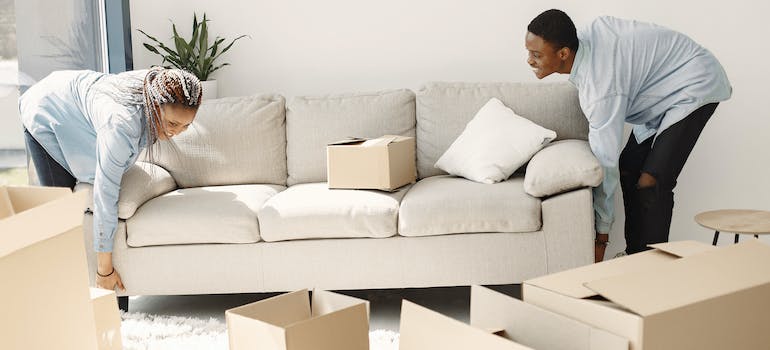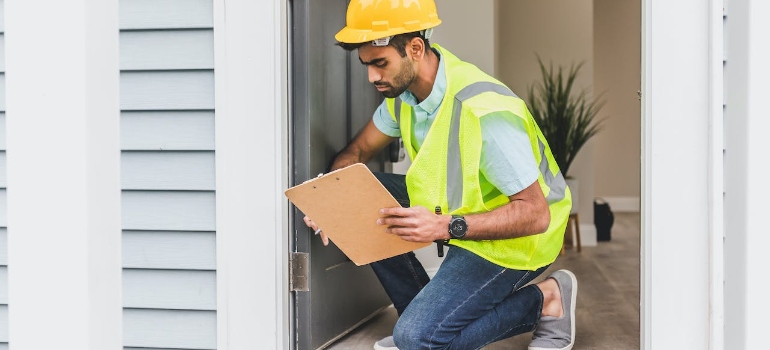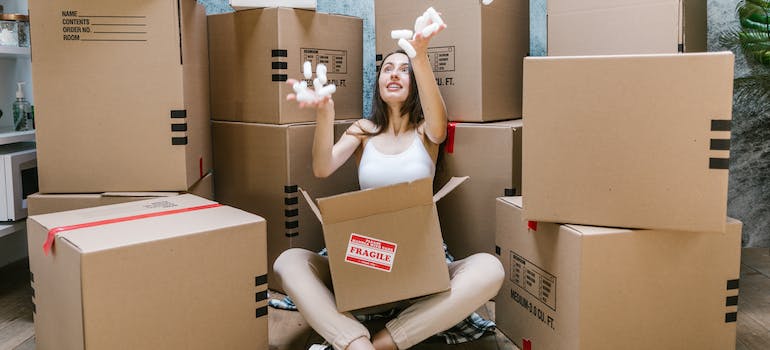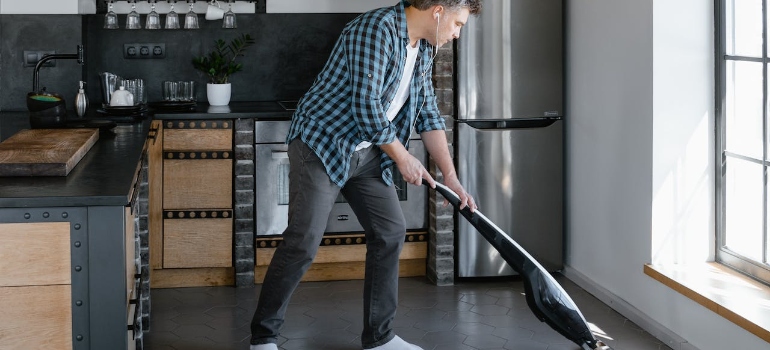Modern Health and Safety Moving Protocols
When preparing for a move, safeguarding personal well-being and property integrity are top priorities. Up-to-date standards, practices, and health and safety moving protocols have evolved to prioritize these aspects, adapting to both legislative mandates and practical necessities. Hence, this article will outline the contemporary standards and practices that define a secure and health-conscious relocation process in Idaho and beyond. As you step through the initial preparations to the eventual settling into your new home, our team at Peasley Moving & Storage lays out the critical steps and precautions to ensure your relocation unfolds safely. Let’s walk through the ins and outs of contemporary moving protocols that put your well-being first.
Understanding the Basics of Moving Health and Safety
An injury-free move requires a clear understanding of the health and safety terminology that underpins the entire operation. Here are some fundamental terms you should be familiar with:
- Ergonomics: This refers to the science of designing and arranging things people use so that the people and things interact most efficiently and safely. When moving, ergonomics is crucial as it involves using proper lifting techniques and moving methods to avoid strain or injury.
- Hazard: This is anything that could cause harm or adverse health effects to individuals involved in the moving process. In moving, hazards can range from exposed nails and sharp edges to slippery floors and heavy lifting.
- PPE (Personal Protective Equipment): Equipment worn to minimize exposure to hazards that can cause serious workplace injuries and illnesses. For moving, PPE may include gloves, back supports, and sturdy footwear.
- Manual Handling: The handling of objects by lifting, lowering, carrying, pushing, or pulling. The weight and size of items during a move make manual handling practices important to prevent injuries.
- Risk Assessment: The process of evaluating the potential risks in a projected activity or undertaking. Before moving, identifying potential risks can help mitigate them.
This terminology provides the language necessary to identify and mitigate risks effectively. Thus, it is a cornerstone for establishing protocols that protect you against potential harm.

Primary Health Risks and Safety Concerns During a Move
While often focused on the destination, moving comes with health and safety concerns that must be managed from start to finish. Awareness of these concerns is essential in taking preemptive steps to avoid them. Here’s what you should be particularly vigilant about:
- Musculoskeletal Injuries: These injuries can affect your body’s movement and are often the result of lifting incorrectly. You can prevent them by using proper lifting techniques and equipment.
- Falls and Slips: You might trip or slip when moving, especially if your view is obstructed by items you’re carrying or if pathways are cluttered. Keeping clear paths and wearing shoes with good traction can help avoid these accidents.
- Cuts and Abrasions: Packing and unpacking can expose you to sharp edges and points. Protect yourself by wearing gloves and securing sharp items safely in their containers.
- Stress: The moving process can be overwhelming and mentally taxing, leading to stress. Plan ahead and take breaks when needed to manage your stress levels effectively.
- Dehydration and Exhaustion: Prolonged physical activity, particularly in warm weather, can lead to dehydration and exhaustion. Stay hydrated and take breaks to maintain energy and well-being throughout the move.
Understanding these terms and being aware of potential risks empowers you to plan and execute a move that safeguards your health and safety at every step. With health and safety moving protocols, you can avoid common pitfalls and secure a safe transition to your new space.
Role of Professional Moving Services
Professional moving services Boise ID offers do more than just transport belongings from one location to another; they bring expertise and precision to the moving process. The role of these services is crucial in ensuring that the myriad components of a move are managed safely and efficiently.
The Importance of Choosing Certified and Reputable Movers
Selecting a certified and reputable moving company is paramount. Certified local movers in Boise adhere to industry standards and regulations to protect you and your belongings. They are trained to handle your items carefully and navigate the complexities of a move, all while reducing the risk of injury and loss.
Services Provided by Professional Movers to Address Health and Safety
Professional movers offer a suite of services tailored to uphold health and safety. These include proper packing and handling of items, use of appropriate lifting techniques, and provision of the right tools and equipment to carry out the move safely. They also ensure the safe transportation of your belongings, reducing the chance of damage and injury.

Pre-Move Health and Safety Moving Protocols
Preparing for a move is a critical step that sets the stage for a secure transition. Proper pre-move preparations can significantly reduce the risks of accidents and injuries.
Homeowner Checklist for a Safe Moving Environment
Creating a checklist can help you ensure that all safety aspects are addressed before the move begins. This includes securing loose items, clearing pathways, and ensuring all packing materials are safe and ready to use. A thorough checklist can help you create a safe and organized moving environment.
Packing Materials and Methods to Prevent Injuries and Damage
Using the right packing materials and suitable methods is essential in protecting your belongings and yourself. Recommendations include using sturdy moving boxes Boise providers sell, proper wrapping materials, and techniques that prevent shifting during transport. Understanding how to pack effectively can minimize the risk of damage to your items and prevent injuries caused by falling or unstable items.
Moving Day Protocols
Moving day embodies the culmination of your planning efforts, where attention to detail and adherence to safety practices are paramount. The protocols you follow on this day are pivotal in navigating the hustle of transition while ensuring everyone’s safety and the protection of your belongings. So, here’s our step-by-step guide to a safe moving day procedure:
- Pre-Move Briefing: Start with a briefing with all parties involved to confirm the day’s schedule, special instructions for delicate items, and emergency procedures.
- Final Inventory Check: Conduct a final review of the inventory list to ensure everything is accounted for before the move begins.
- Pathway Clearance: Clear all pathways and confirm there is ample space for movers to navigate safely with boxes and furniture.
- Furniture and Box Inspection: Check that all boxes are securely sealed, and furniture is properly wrapped or dismantled for safe transport.
- Safety Walkthrough: Perform a safety inspection of the moving truck and equipment to verify everything is in good working order.
- Special Handling Review: Review items marked for special handling with the movers to ensure they know what items need extra care.
- Emergency Plan Reminders: Remind everyone of the emergency contact numbers and the nearest hospital or urgent care facility.
Personal Protective Equipment and Its Use by Movers and Homeowners
- Gloves: Wear durable gloves to protect hands from cuts and abrasions while handling boxes and furniture.
- Sturdy Footwear: Ensure everyone wears closed-toe, non-slip shoes to prevent foot injuries and maintain a firm grip on surfaces.
- Back Support Belts: Encourage using back support belts for lifting heavy objects to reduce the risk of back injuries.
- Protective Eyewear: Use protective eyewear when handling items that might shatter or when working in dusty conditions.
- Hard Hats: In environments with overhead hazards, wearing hard hats can protect against head injuries.
Moreover, proper use of PPE is a collective responsibility:
- Training: Provide a quick training session on how to use PPE correctly.
- Inspections: Regularly inspect PPE for wear and tear, replacing any equipment that’s no longer fit for purpose.
- Adaptation to Conditions: Adjust the type and level of PPE based on the specific risks identified during the move.
Executing disciplined health and safety moving protocols and equipping yourself with the appropriate personal protective gear ensures you significantly mitigate the risk of accidents.

Special Considerations for Moving During Public Health Concerns
In times of heightened public health concerns, such as a pandemic, moving takes on additional layers of complexity. Adapting to these conditions is essential to protect the health and well-being of everyone involved.
Adjusted Protocols for Pandemic Situations
During a public health crisis, standard moving procedures must be adjusted to minimize the risk of contagion. These adjusted protocols might include the following:
- Enhanced sanitation measures for moving equipment;
- Health screenings for moving personnel;
- Adherence to social distancing guidelines.
Movers must stay updated with the latest health advisories and integrate them into their moving strategies.
Contactless Moving Options and Their Execution
Contactless moving options have emerged to reduce direct interaction between homeowners and moving crews. This approach requires meticulous planning, where:
- the moving company might provide virtual consultations and
- homeowners can prepare and label items ahead of time.
Execution of a contactless move demands clear communication and precise instructions to ensure that the move is completed effectively without the need for physical oversight.
Post-Move Health and Safety Moving Protocols
Once the move is completed, the focus shifts to establishing a safe and healthy environment in the new location. Proper post-move procedures are as important as the precautions taken during the move.
Ensuring the New Environment is Safe and Sanitized
Before settling in, the new home should be thoroughly cleaned and sanitized, particularly high-touch areas such as doorknobs and light switches. Ventilating rooms to allow fresh air circulation is also advisable to dispel any airborne contaminants that may have entered during the moving process.
Proper Disposal and Recycling of Moving Materials
After unpacking, it’s important to dispose of moving materials like boxes and packing peanuts responsibly. Many of these materials can be recycled or repurposed, reducing environmental impact and maintaining cleanliness and safety in your new surroundings.

Regulatory Compliance and Legal Considerations
Ensuring compliance with health and safety regulations is not only responsible but often a legal requirement. Knowledge of these regulations helps protect homeowners and moving companies alike.
Overview of Idaho State Regulations Regarding Moving Health and Safety
In Idaho, as in other states, specific regulations govern the moving industry, particularly health and safety. These can include mandates on licensing, the condition and use of moving equipment, and the rights and responsibilities of both moving companies and consumers. These regulations are typically enforced by the Idaho Transportation Department (ITD) for intrastate moves and by the Federal Motor Carrier Safety Administration (FMCSA) for interstate moves.
Liability and Insurance Considerations for Homeowners and Movers
Liability and insurance are crucial considerations in the moving process. Homeowners should understand the extent of movers’ liability for loss or damage, as well as the various insurance options available to them. Movers, on their part, must ensure they operate within the bounds of the law and have adequate coverage to protect themselves against potential claims.
Technology and Moving Safety
Advancements in technology have a significant impact on the moving industry, particularly in enhancing safety protocols and streamlining the moving to Idaho process.
Innovations in Moving Equipment and Vehicles for Enhanced Safety
The advent of new technologies has led to the development of moving equipment and vehicles with advanced safety features. These may include vehicles equipped with sensors and backup cameras to reduce the risk of accidents during transport, as well as automated lifting aids that help prevent injuries by minimizing the physical strain on movers.
Software and Apps That Facilitate Safer and More Organized Moves
There are various applications and software designed to make moves safer and more efficient. These digital tools can help with inventory management, ensuring that all items are accounted for and handled with care. Some apps also provide real-time updates and communication platforms for movers and clients, increasing transparency and reducing the likelihood of errors and miscommunication.

Common Missteps and How to Avoid Them
Awareness of potential pitfalls during the moving process is key to avoiding them. Some of the most common errors during moves include inadequate packing, improper lifting techniques, and neglecting to secure items during transport, which can lead to injury or damage. Another frequent oversight is underestimating the value of professional help, leading to unnecessary risks.
To mitigate these risks, invest time in learning proper packing and lifting techniques and secure belongings correctly in the moving vehicle. Consider hiring professional heavy equipment movers for weighty or bulky items and ensure open lines of communication throughout the move to anticipate and address potential hazards promptly.
Ensuring Safety in Motion
In essence, completing a safe relocation depends on rigorous adherence to health and safety moving protocols. These guidelines are the frame that upholds a secure and efficient relocation process, providing a shield against potential perils and a blueprint for systematic organization. From leveraging technology to avoid common pitfalls to maintaining vigilant compliance with Idaho’s regulatory framework, each measure plays a key role in fortifying the moving experience. With this foundation, you’re ensuring every step is a stride toward preserving integrity and well-being and a hallmark of a truly well-managed life transition.

Everyone from the packers to the movers were awesome! They were all very professional and showed up when they were supposed to. would definitely use them again.

